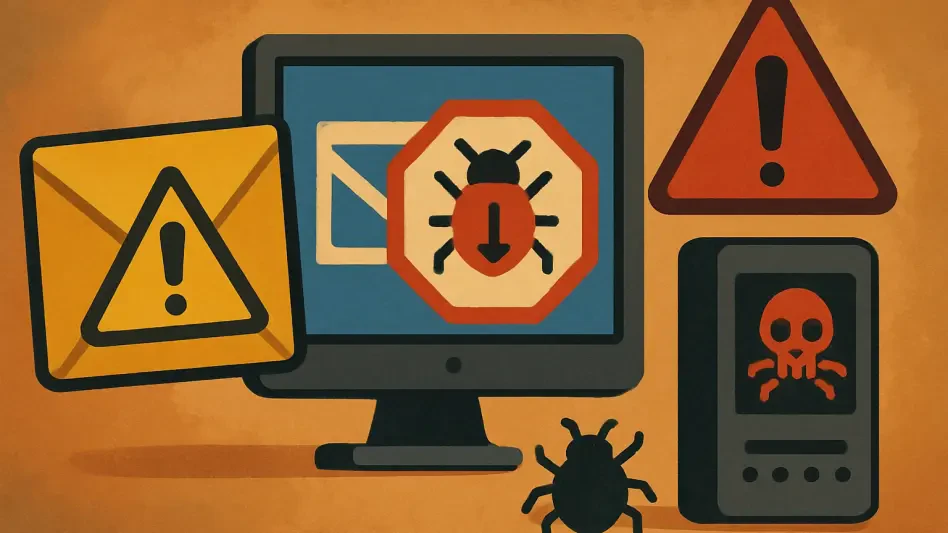In a chilling reminder of the ever-evolving landscape of cyber threats, a new and highly sophisticated malware known as NotDoor has emerged, specifically targeting Microsoft Outlook users with the intent to steal sensitive data and compromise entire systems. Discovered by the threat intelligence unit of a prominent Spanish cybersecurity firm, this malicious software is attributed to APT28, a Russian state-sponsored hacking group also known as Fancy Bear, with ties to the country’s military intelligence. Notorious for past high-profile cyber-espionage campaigns, APT28 has once again demonstrated its ability to craft advanced tools that challenge even the most robust security measures. Primarily aimed at organizations within NATO member countries, NotDoor represents a significant escalation in targeted cyber warfare. This alarming development underscores the urgent need for heightened vigilance and proactive defense strategies among businesses and institutions relying on Outlook for daily operations, as the risk of data breaches and system takeovers looms larger than ever.
Unveiling a Stealthy Threat
The sophistication of NotDoor lies in its design as a backdoor malware, meticulously coded in Visual Basic for Applications (VBA), a language often used to automate tasks within Microsoft Office suites. This malware operates with alarming stealth, monitoring incoming emails in Outlook for specific trigger phrases such as “Daily Report” to activate its malicious payload. Once triggered, it executes commands that can compromise the victim’s system, enabling attackers to gain unauthorized access. NotDoor employs advanced evasion tactics like code obfuscation through randomized variable names and custom encoding, making it difficult for traditional antivirus software to detect its presence. Additionally, it uses legitimate Microsoft binaries like OneDrive.exe for DLL side-loading, masquerading as a trusted process to bypass security checks. This cunning use of familiar tools highlights how state-sponsored actors exploit everyday software features for nefarious purposes, posing a significant challenge to cybersecurity professionals tasked with safeguarding critical data.
Beyond its initial activation, NotDoor ensures persistence by modifying system registries to disable security warnings, allowing it to remain active even after system reboots. It leverages Outlook’s event-driven VBA triggers to stay hidden, creating concealed directories for temporary storage of stolen data before exfiltrating it to attacker-controlled email addresses. After transmission, the malware deletes these files to cover its tracks, further complicating detection efforts. Communication with its handlers is maintained through confirmation callbacks sent to webhook sites, providing real-time updates on successful compromises. This level of intricacy in design reveals the depth of expertise behind APT28’s operations, as NotDoor not only steals sensitive information but also establishes a foothold for long-term espionage. Such capabilities emphasize the importance of understanding the full scope of this threat to develop effective countermeasures against its covert infiltration tactics.
Strategic Targeting and Geopolitical Implications
A striking aspect of NotDoor’s deployment is its deliberate focus on Western organizations, particularly those in NATO member countries, reflecting a clear geopolitical strategy by APT28. Multiple companies across various sectors have already fallen victim to this malware, indicating a broad yet targeted campaign aimed at espionage and disruption. This pattern aligns with historical actions by Russian state-sponsored groups seeking to undermine or gather intelligence from entities perceived as adversaries. The choice of Outlook as a primary attack vector is no coincidence, given its widespread use in corporate and governmental environments where sensitive communications occur daily. By exploiting a platform integral to organizational workflows, NotDoor maximizes its potential impact, accessing everything from confidential emails to strategic plans. This calculated approach underscores the intersection of cyber threats with international tensions, where digital attacks serve as tools of broader political agendas.
The broader trend of escalating cyber warfare capabilities among state-sponsored actors like APT28 adds another layer of concern to the emergence of NotDoor. Security experts note that the group’s ability to adapt and innovate poses a persistent challenge to global cybersecurity efforts. As malware becomes more complex, traditional defense mechanisms often fall short, necessitating a shift toward more dynamic and anticipatory strategies. The targeted nature of these attacks also suggests a deep understanding of victim environments, likely gained through prior reconnaissance or insider knowledge. For organizations within NATO-aligned regions, this serves as a stark reminder of their position on the frontline of digital battlegrounds. Addressing such threats requires not only technical solutions but also international cooperation to track and mitigate the activities of groups like APT28, whose actions have far-reaching implications beyond individual data breaches.
Strengthening Defenses Against Evolving Threats
In response to the sophisticated nature of NotDoor, cybersecurity professionals advocate for immediate and robust defensive measures to protect vulnerable systems. A critical recommendation is to disable macros by default in Microsoft Office applications, as this serves as the primary entry point for the malware’s activation. Many organizations overlook this simple yet effective step, leaving their systems exposed to VBA-based attacks. Beyond this, implementing rigorous monitoring of Outlook activity is essential to detect unusual behavior or email-based triggers that could indicate malicious activity. Regular updates to security software and employee training on recognizing phishing attempts or suspicious email content can further reduce the risk of compromise. These proactive steps, while seemingly basic, form the foundation of a resilient defense against increasingly cunning malware designed to exploit human and technical vulnerabilities.
Looking back, the battle against NotDoor revealed how even trusted tools like Outlook could be weaponized by determined adversaries such as APT28. Cybersecurity teams across affected sectors scrambled to patch vulnerabilities and educate users on safer practices. Moving forward, organizations must prioritize continuous improvement of their security posture by investing in advanced threat detection technologies capable of identifying obfuscated code and anomalous system behaviors. Collaboration with international cybersecurity bodies can also provide access to shared intelligence on emerging threats, enabling faster response times. As the digital landscape evolves, adopting a mindset of constant adaptation ensures that defenses keep pace with the innovative tactics of state-sponsored actors. By taking these actionable steps, businesses and institutions fortify their resilience against future iterations of sophisticated malware, safeguarding critical data from falling into the wrong hands.








